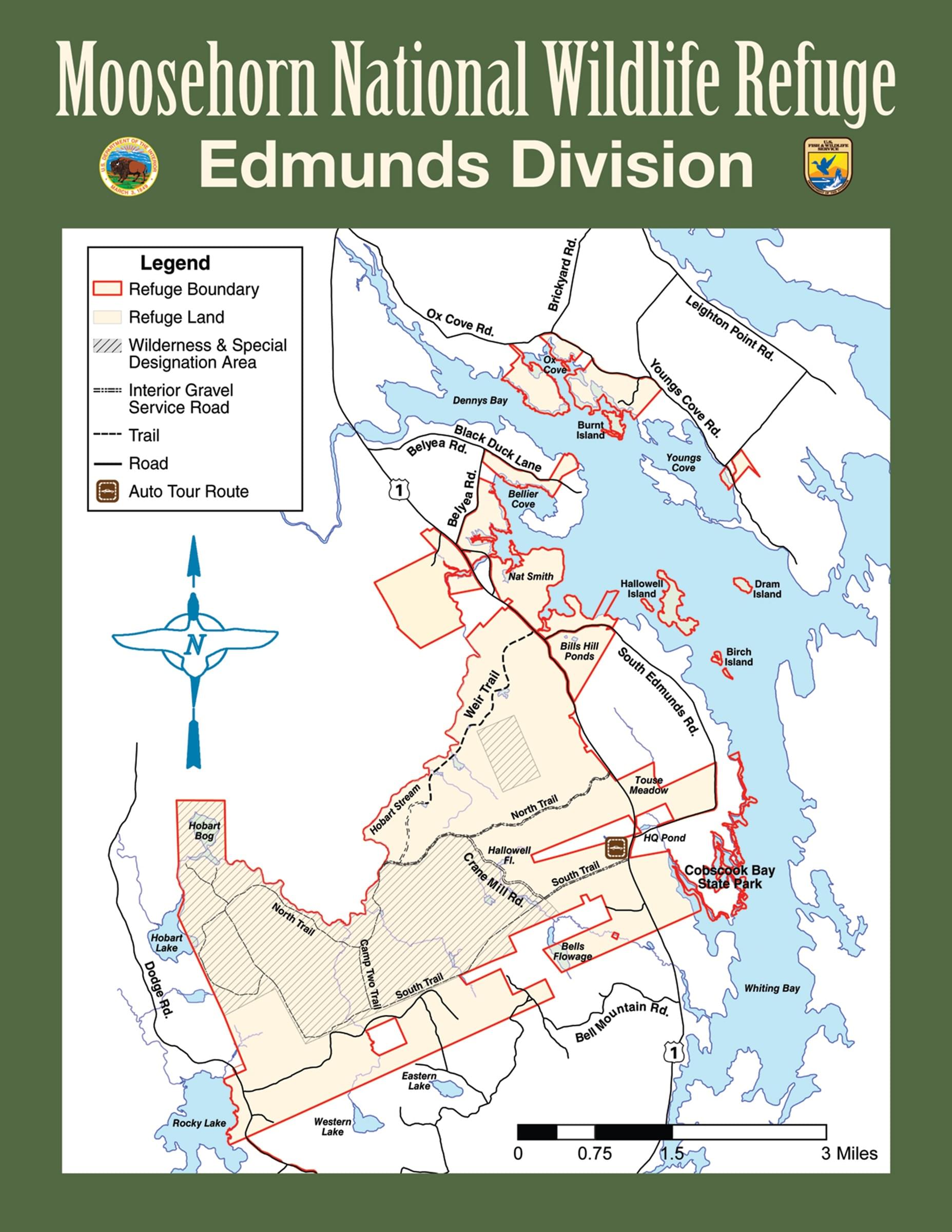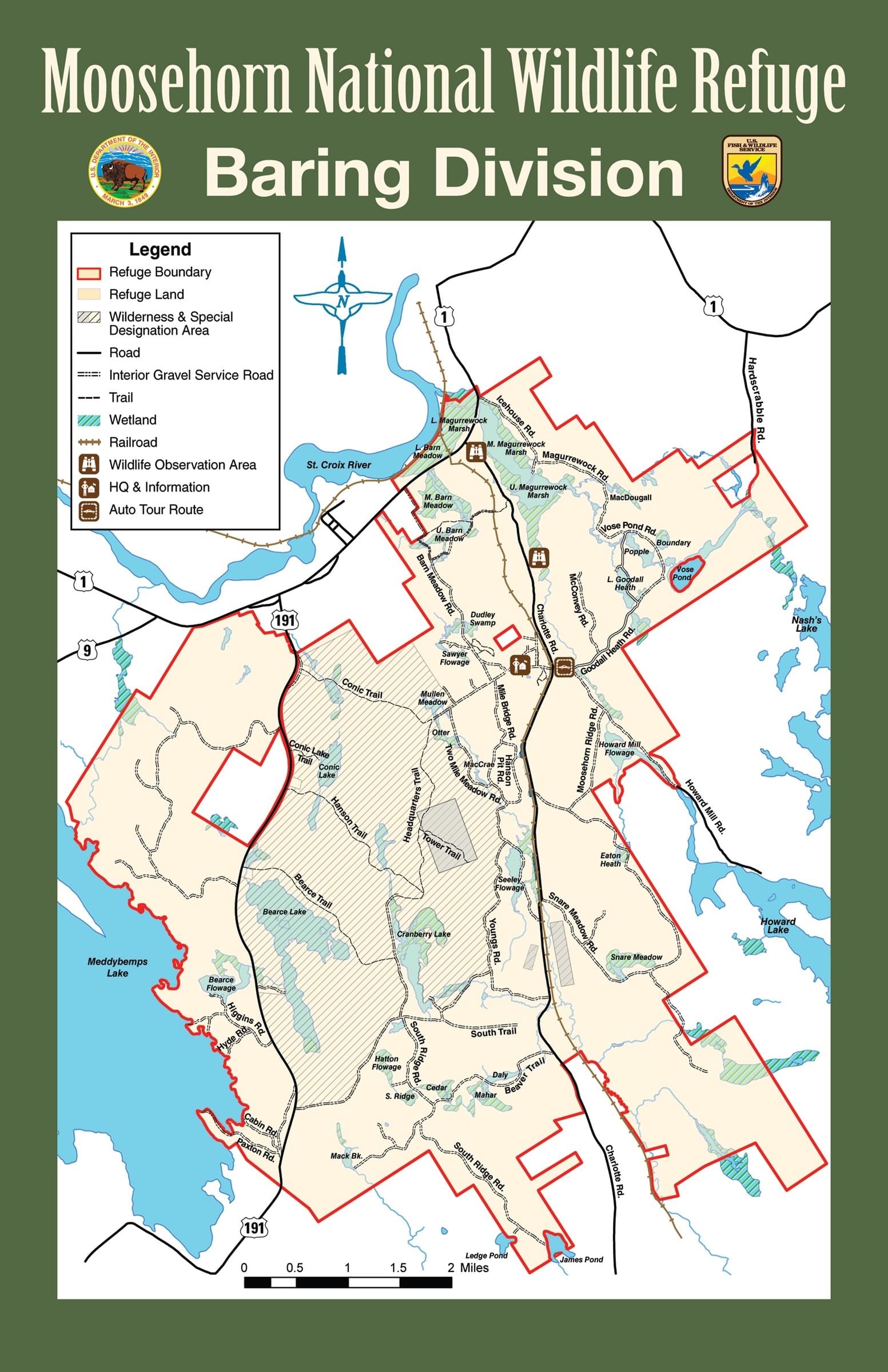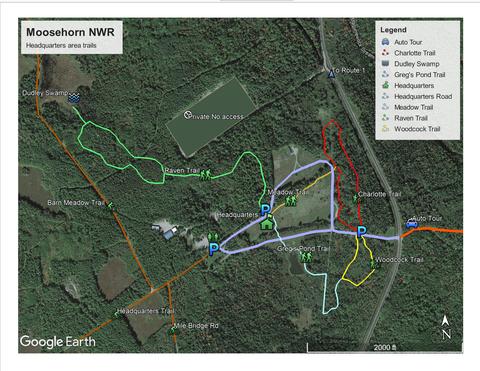
Mooshorn National Wildlife Refuge
Mooshorn National Wildlife Refuge
Calais, Maine Dennysville, Maine
Official WebsiteMoosehorn National Wildlife Refuge map
About this Location
Moosehorn National Wildlife Refuge is a northern treasure in the National Wildlife Refuge System. It consists of nearly 30,000 acres of federally protected lands in northeastern coastal Maine. The refuge's landscape is varied, with rolling hills, large ledge outcroppings, streams, lakes, bogs, and marshes. The diversity of forests and wetlands provides habitat for over 225 species of birds, endangered species, resident wildlife, and rare plants. A northern hardwood forest of aspen, maple, birch, spruce, and fir dominates the upland. Scattered stands of majestic white pine are common. The Edmunds Division boasts several miles of rocky shoreline where tidal fluctuations of up to 24 feet occur twice a day.
Moosehorn National Wildlife Refuge was established in 1937 to protect migratory birds. The Refuge has two divisions, the 20,532-acre Baring Division about 3 miles southwest of Calais and the 8,664-acre Edmunds Division about 3 miles south of Dennysville directly adjacent to Dennys and Whiting Bays along US-1.
Moosehorn NWR and the surrounding region are generally characterized by rolling hills, large rock outcrops, scattered boulders, second-growth northern hardwood-conifer forest, and some pockets of pure spruce and fir. Numerous streams, beaver flowages, bogs, marshes, and forested wetlands are embedded within the forested landscape.
Moosehorn NWR contains over 4,500 acres of wetlands, including 28 functional impoundments or flowages that provide habitat for nesting and migrating waterfowl and marsh birds. The refuge has 18 miles of rocky shoreline along Dennys and Whiting Bays and 7 miles of shoreline on Meddybemps Lake. These small bays are part of the larger Cobscook Bay that supports the highest density of nesting bald eagles in the northeastern U.S. and has been essential to the recovery of the bald eagle in the east. The bay also provides critical migration and wintering habitat for the American Black Duck.
Content from Official Website



